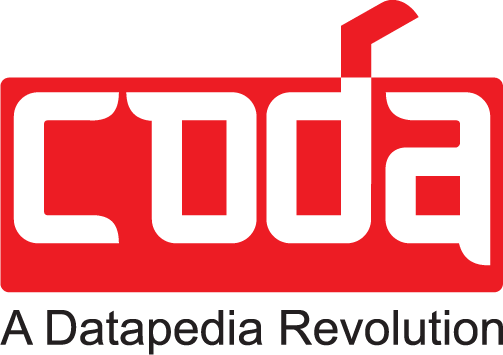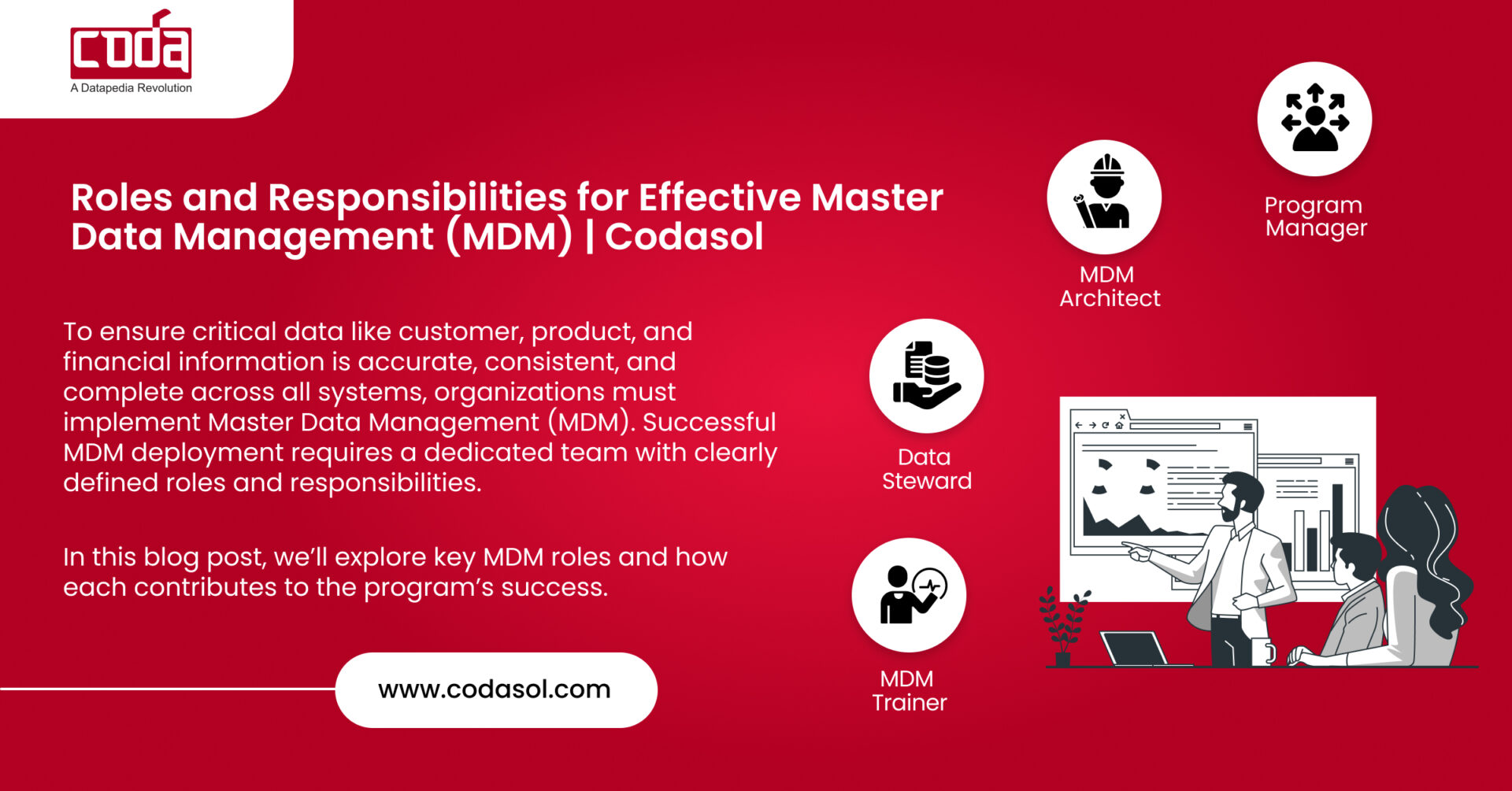To guarantee that the vital data assets, such as customer, product, and financial data, are accurate, consistent, and complete across all enterprise systems and applications, enterprises must implement master data management (MDM). To ensure the success of MDM deployment, a team of professionals with distinct roles and duties is needed.
The many MDM roles and duties, as well as how they support the program’s success, will be covered in this blog article.
Executive Sponsor
Role :
The Executive Sponsor is the top leader who advocates the MDM program and provides it with the resources and support it needs to succeed.
Responsibilities:
- Define and communicate the MDM strategy that aligns with the organization’s goals and objectives.
- Provide oversight and guidance to the MDM Program Manager and team.
- Ensure the MDM program receives the necessary funding, staff, and other resources to achieve its objectives.
- Identify and address risks and issues that could impact the success of the MDM program.
- Monitor the progress of the MDM program and make adjustments as needed.
- Celebrate successes and communicate them to the rest of the organization to increase buy-in and support for the program.
Program Manager
Role :
The MDM Program Manager is responsible for the overall management of the MDM program, including its strategy, governance, and implementation.
Responsibilities:
- Develop and manage the MDM program strategy that aligns with the organization’s goals and objectives.
- Create and implement policies and procedures to ensure effective data governance and management.
- Collaborate with other departments to make sure the MDM program is aligned with the organization’s goals and objectives.
- Oversee the MDM team and ensure the program meets its goals and objectives.
- Monitor the progress of the MDM program and make adjustments as needed.
- Communicate the value of MDM to key stakeholders and promote buy-in and support for the program throughout the organization.
MDM Architect
Role :
The MDM Architect designs the MDM solution that meets the organization’s needs.
Responsibilities:
- Design and develop the MDM solution that aligns with the MDM strategy and meets the organization’s requirements.
- Ensure that the MDM solution is scalable, reliable, and secure.
- Collaborate with the MDM Program Manager to ensure that the MDM solution aligns with the MDM strategy and meets the organization’s requirements.
- Oversee the implementation of the MDM solution and ensure that it meets quality standards.
- Identify and address technical issues that could impact the success of the MDM program.
Data Steward
Role :
The MDM Data Analyst is responsible for analyzing data to identify trends, patterns, and insights that can be used to improve business processes and decision-making.
Responsibilities:
- Analyze data to identify trends, patterns, and insights that can be used to improve business processes and decision-making.
- Work with the MDM team to develop and implement data quality metrics.
- Collaborate with other departments to ensure that the organization’s data needs are met.
- Communicate data insights to key stakeholders to support decision-making.
MDM Trainer
Role :
The MDM Trainer is responsible for providing training to end-users on how to properly use the MDM solution and adhere to data governance policies and procedures.
Responsibilities:
- Develop and deliver training programs to end-users on how to properly use the MDM solution and adhere to data governance policies and procedures.
- Create training materials and documentation to support end-users.
- Collaborate with the MDM team to develop and implement data quality metrics.
- Provide ongoing support to end-users and address any training-related issues.


